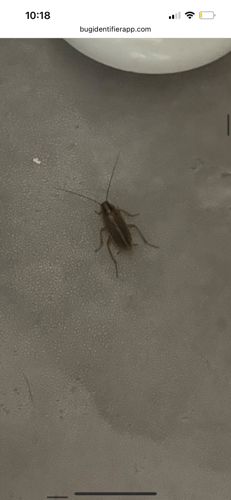German Cockroach
Scientific Name: Blattella germanica
Order & Family: Blattodea, Ectobiidae
Size: 1.1 to 1.6 cm (0.43 to 0.63 inches) in length

Natural Habitat
Primarily indoor pests, found in warm, humid, and dark places close to food and water sources. Common habitats include kitchens, bathrooms, basements, and utility rooms. They can hide in cracks, crevices, behind appliances, under sinks, and inside walls.
Diet & Feeding
Omnivorous scavengers. They feed on almost anything, including food scraps, crumbs, pet food, grease, cardboard, glue, soap, and even human hair and fingernails. They are particularly attracted to starches, sugars, and fatty foods.
Behavior Patterns
Nocturnal, active at night seeking food and water. They are fast-moving and can climb walls and infest small cracks and crevices. They reproduce rapidly, with females laying egg capsules (oothecae) containing multiple eggs. Nymphs hatch from these eggs and undergo several molts before reaching adulthood.
Risks & Benefits
Risks: German cockroaches are significant pests. They can contaminate food and surfaces with bacteria (e.g., Salmonella, E. coli), allergens, and pathogens, leading to food poisoning, asthma, and allergic reactions. Their presence can be a sign of unsanitary conditions and can cause psychological distress. They have no known benefits to humans or the ecosystem in an indoor setting. Benefits: In nature, some cockroach species play a role as decomposers, but the German cockroach is almost exclusively a pest in human environments.
Identified on: 8/21/2025